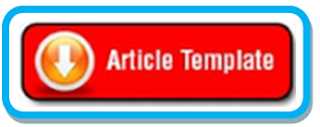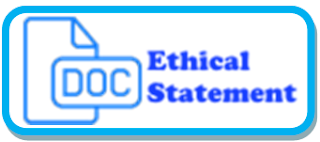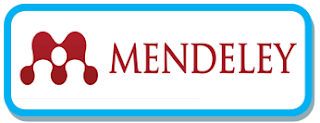Author Guidelines
A. AUTHOR GUIDELINES
1. The scopes of the theme are around for Islamic Studies and Humanities.
2. Articles can be in the form of research results in accordance with the scope of research or in-depth study that leads to providing solutions to problems that occur in society.
3. Articles length is between 6000 up to 7000 words typed by using Garamond Font with 12 Font Size and 1.5 space.
4. Writing articles in the form of narrative descriptions with NO Numbering System.
5. Articles are structured as follows:
a) Title; This is your opportunity to attract the reader’s attention. Remember that readers are the potential authors who will cite your article. Identify the main issue of the paper. Begin with the subject of the paper. The title should be accurate, unambiguous, specific, and complete. Do not contain infrequently-used abbreviations.
b) Author(s) Name(s); Write Author(s) names without title and professional positions such as Prof, Dr, Production Manager, etc. Do not abbreviate your last/family name. Always give your First and Last Name.
c) Affiliations; Write clear affiliation of all authors. Affiliation includes the name of department/unit, (faculty), name of university, address, country.
d) Email Address; Write the email address with lowercase capitalization. Articles with more than one author, write only the first author's email.
e) Abstract; Abstract should be in one paragraph between 150 sd 200 words with 1 space and written in two languages namely English with Keywords and Indonesia with Kata Kunci consisting of three to five words. The abstract should stand alone, which means that no citation in the abstract. Consider it the advertisement for your article. The abstract should tell the prospective reader what you did and highlight the key findings. Avoid using technical jargon and uncommon abbreviations. The abstract should succinctly describe your entire paper. It comprises of the purposes of the research, method, and the findings of the research. Keywords are the labels of your manuscript and critical to correct indexing and searching. Therefore, the keywords should represent the content and highlight of your article. Use only those abbreviations that are firmly established in the field. Each word/phrase in keyword should be separated by a semicolon (;), not a comma (,).
f) Introduction; In the Introduction, the Authors should state the objectives of the work at the end of the introduction section. Before the objective, Authors should provide an adequate background, and very short literature survey in order to record the existing solutions/method, to show which is the best of previous researches, to show the main limitation of the previous researches, to show what do you hope to achieve (to solve the limitation), and to show the scientific merit or novelties of the paper. Avoid a detailed literature survey or a summary of the results. Do not describe a literature survey as author by author, but should be presented as a group per method or topic reviewed which refers to some kind of literature. This section discusses the purposes of the study or research problems, the contribution to knowledge, and the research gap. Please state them clearly in the beginning paragraph supported by related theories in the next paragraphs.
g) Methodology; This section explains the rationale for the application of specific procedures or techniques used to identify, select, and analyze information applied to understand the research problem/project, thereby, allow the readers to critically evaluate your project’s/study's overall validity and reliability.
h) Results and Discussions; Results should be clear and concise. The results should summarize (scientific) findings rather than providing data in great detail. Please highlight the differences between your results or findings and the previous publications by other researchers. The discussion should explore the significance of the results of the work, not repeat them. A combined Results and Discussion section is often appropriate. Avoid extensive citations and discussion of published literature.
The discussion is written to interpret and describe the significance of your findings in light of what was already known about the issues being investigated, and to explain any new understanding or insights about the problem after you have taken the findings into consideration. It should connect to the introduction by way of the research questions or hypotheses you posed and the literature you reviewed, but it does not simply repeat or rearrange the introduction; this section should always explain how your study has moved the reader's understanding of the research problem forward from where you left them at the end of the introduction.
The research findings in the form of research data are further discussed or critically interpreted with a particular relevant theoretical approach. Data can also be supported by the presentation of tables, images, etc. Captions for a table is written above it with sequenced numbering so that it can be easily referred to, though not put under the pointing sentence/ paragraph. Line (border) to the table is made minimalist by eliminating the vertical lines and leaving horizontal lines deemed necessary. Captions for images are placed below the picture, also with providing sequenced numbering. One page only accommodates a table or an image with a maximum of two-thirds the size of the page (size adjusted as efficiently as possible).
In the discussion, it is the most important section of your article. Here you get the chance to sell your data. Make the discussion corresponding to the results, but do not reiterate the results. Often should begin with a brief summary of the main scientific findings (not experimental results). The following components should be covered in discussion: How do your results relate to the original question or objectives outlined in the Introduction section (what)? Do you provide interpretation scientifically for each of your results or findings presented (why)? Are your results consistent with what other investigators have reported (what else)? Or are there any differences?
i) Conclusions; Conclusions should only answer the objectives of the research. Tells how your work advances the field from the present state of knowledge. Without clear Conclusions, reviewers and readers will find it difficult to judge the work, and whether or not it merits publication in the journal. Do not repeat the Abstract, or just list experimental results. Provide a clear scientific justification for your work, and indicate possible applications and extensions. You should also suggest future experiments and/or point out those that are underway. The conclusion is intended to answer the research problems or purposes. It helps the readers understand why your research should matter to them after they have finished reading the paper. It is not just a summary of the main topics covered or a re-statement of your research problem, but a synthesis of key points and, if applicable, where you recommend new areas for future research.
j) References; References should be typed in Alphabetical Order. The minimum requirement is 20 references with 40% journal articles. It is suggested to use reference software like EndNote, Mendeley or Zotero). Cite the main scientific publications on which your work is based. Cite only items that you have read. Do not inflate the manuscript with too many references. Avoid excessive self‐citations. Avoid excessive citations of publications from the same region. Check each reference against the original source (author's name, volume, issue, year, DOI Number). Use other published articles in the same journal as models.
6. The Arabic term that is not yet an Indonesian word for absorption should be transliterated by following the "TRANSLITERATION GUIDE" set forth in this writing guide (read more CHAPTER B).
7. File articles in .doc, .docx or .rtf format uploaded by author via Open Journal System (OJS) Millati: http://e-journal.iainsalatiga.ac.id/millati by registering the account (register) first as author (s) and then log into the account (login) and follow the steps "VIA OJS ARTICLES DELIVERY GUIDE" next (read more CHAPTER III).
8. If there are obstacles in the submission of articles via OJS, please contact the admin via email with the address: millati.fuadah@gmail.com by including articles in .doc, .docx or RTF format.
B. TRANSLITERATION GUIDELINES
The transfer of Arabic Indonesian
alphabet Millati: Journal of Islamic Studies and Humanities based on the Joint Decree (SKB) of the Minister of Religious Affairs and the Minister of Education and Culture of the Republic of Indonesia, dated 22 January 1988, No. 158/1987 and 0543.b / U / 1987, as contained in the Guide Book of Arabic Translations (
A Guide to Arabic Transliteration ), INIS Fellow 1992. Please open the following
GUIDELINES.












